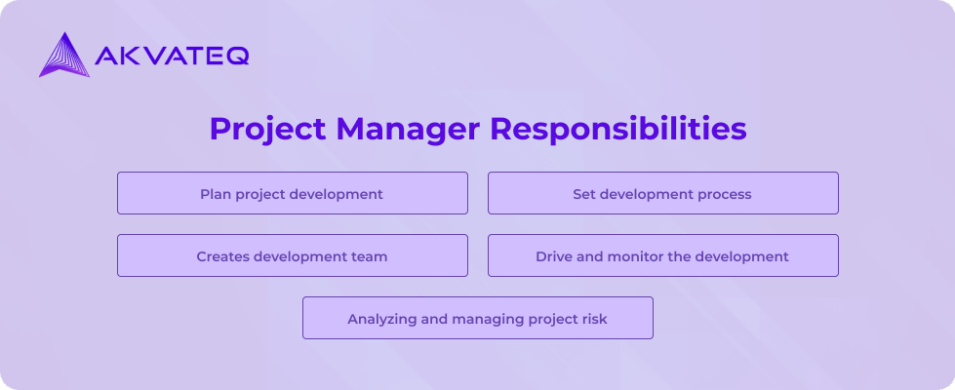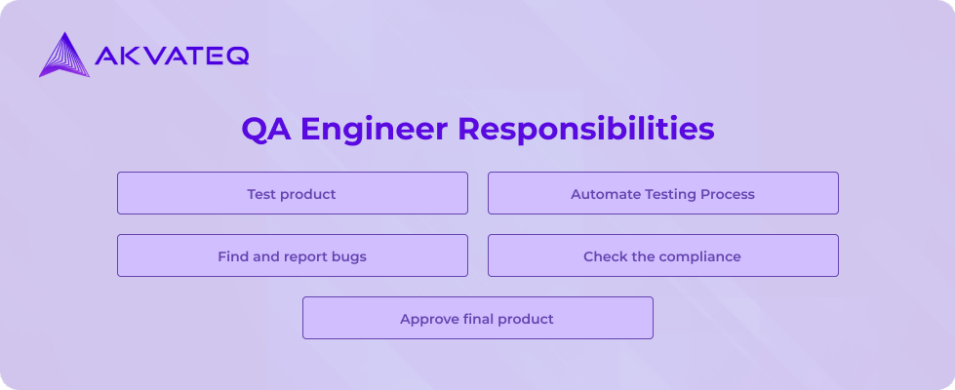Did you know that about two-thirds of website projects fail because they’re not managed well? Surprisingly, only about half of businesses think that project management is crucial for achieving their goals and doing well in the market.
Basically, companies should use good techniques to manage their website projects if they want to achieve their overall business goals. Clearly defining each team member’s job and what they’re responsible for not only saves money and time but also makes it more likely that they’ll create a really good product quickly.
In this article, we’ll explain all the important stuff about the team and web development department that creates websites: what each person does, what they’re responsible for, and how the whole process of building a website works.
Web Development Team Structure
Just knowing how to code isn’t always enough to make a website successful. That’s why many people who care about a website also focus on how it looks and how it’s promoted. So, when putting together a team to build a website, it’s important to have a mix of experts with different skills and knowledge that match the project’s goals.
Some companies offer all the specialists you need for a project, but others don’t, especially smaller and more specialized businesses.
Web Development Team Roles and Responsibilities
Alright, every company that builds custom websites has its own set of services, and team structure in the software development field can be different. Let’s look at the main roles in a web development team, the skills needed, and the talents that, when combined, create a solid foundation for a team organizational structure.
Business Analysis Associate

The job of this specialist is to understand your project idea, break it down, and turn it into detailed technical plans. The web development team then uses these plans to figure out how long the project will take and get prepared.
If you’re planning to make a retail app or software for a marketing project, the first thing an analyst will want to know is, “What do you want your product to achieve?”
However, the web development team can’t just use raw requirements to build the actual product. A business analyst has to turn that info into a clear project plan that guides the team. In short, the analyst specifies what each part of the web app should do, what each feature is in charge of, and which buttons to click for specific actions.
In simpler terms, the business analyst lays the foundation for creating the product.
Project Manager

In a web development team structure, project managers are like the conductors of an orchestra. They organize, coordinate, and keep an eye on team roles and the different stages of the workflow, from planning to assigning tasks to each team member.
Normally, the project manager follows the agile approach in web development because web projects can change a lot. They start by checking the technical plans and the deadline. Then, using that info, they make a project plan divided into stages, also called sprints, where they work on specific features for a certain time.
After the client approves the plan, the project manager sets up a new project on platforms like Jira, Trello, Basecamp, ClickUp, or Wrike—these are the go-to tools in 2023 for managing tasks and coordinating a web development team.
Next, the project manager keeps an eye on the entire process of building the product to make sure each stage finishes on schedule. When a stage is done, they show you a demo of the product to get your thoughts and approval to move forward. If there’s something you’re not happy with, they tell the web development team to fix it.
Solution Architect

Designers and developers use information architecture and need various tools and resources at different stages of the project. This requires a good understanding for things to work smoothly.
Solution architects organize how the project looks and what it includes. They play a big role in the project’s early stages. Their main job is to make diagrams that explain the overall plan of the website to both clients and the web development team. They collaborate closely with project designers.
Working alongside project designers, solution architects create page wireframes to show how the pages will function and how the website’s structure and content are connected. They study what users like to make it simple for them to find the right content on the website.
Solution architects need to give clients and developers clear charts and diagrams so they can grasp how the website is structured. These visual representations are especially important for back-end developers.
UI/UX Designer

The design is a big step that guides the entire project. There are at least two main types: user interface and user experience design. Usually, one designer in a web development team handles both of these roles.
Initially, a UI/UX designer looks at the project needs and who it’s meant for to understand everything. This helps them find out what problems users might have and come up with good design solutions. With this in mind, the designer makes a wireframe, which is like a rough sketch showing where things will go on the website.
Sometimes, the designer uses user stories to stay focused and remember the project’s goals. To put it simply, a user story is like a short description of what a person wants to do with a digital product. These stories are written using a language called Gherkin, and you need a bunch of them to cover all the different situations.
UX is about figuring out how things work and are organized, while UI is about how they look. It involves choosing colors, fonts, icons, and more. To put it simply, the designer creates a prototype, which is like the final appearance of your website, using the insights from the UX stage. Then, they check how easy it is to use. The prototype can be either interactive or just a picture.
In addition to the experts we talked about earlier, you might also need a graphic and motion designer in your web development team. These specialists focus on the visual side of the project, creating things like custom illustrations, fonts, logos, and handling animations.
In addition to the experts we talked about earlier, you might need a graphic and motion designer in your web development team. These folks focus on how the project looks (like custom drawings, fonts, and logos) and handle any cool animations.
The most commonly used designer tools in 2024 are:
- Sketch
- InVision
- Illustrator
- Sympli
- Zeplin
Web Developer

Programmers are super important in the web development team structure. They take the design you’ve made and turn it into a functional product that people can use online. When you’re hiring web developers, remember to think about how they divide up their tasks and responsibilities.
Front-end
The front end, also known as the client side, is the part of a website or application that users interact with directly. It includes everything users experience, such as the design, layout, and interactive elements.
Front-end developers are responsible for creating the visual elements and user interface that users interact with. They use technologies like HTML, CSS, and JavaScript to build responsive and visually appealing websites or applications.
Back-end
The back end, also known as the server side, is the part of a website or application that users don’t see. It includes the server, database, and application logic. It manages and stores data and handles the business logic.
Back-end developers work on the server side of applications. They handle data storage, and server logic, and ensure the smooth functioning of the application. They use server-side languages like Python, Ruby, Java, or PHP, and work with databases like MySQL, PostgreSQL, or MongoDB.
Full-stack Developer
Full-stack developers are proficient in both front-end and back-end technologies. They can work on all aspects of a project, from designing the user interface to managing databases and server-side logic. Full-stack developers have a broad skill set and can handle end-to-end development.
For example, in Akvateq’s web development team, we have both all-around developers and specialists who focus on specific technologies. Here’s the main set of technologies we use:
- JavaScript
- Angular
- Node.js
- Express
- .NET
Quality Assurance Engineer

A QA (Quality Assurance) engineer is also one of the important team members of the web development team structure. They make sure your product doesn’t get invaded by bugs and keep a close watch on how it looks and works.
Testing begins by looking at what the project needs. Using that info, QA engineers make a plan for testing. As the development progresses, the developers send each version of the product to the QA engineers. Then, the QA folks check if it meets the technical requirements and any specific requests from the customer, using both automated and manual testing methods.
When the QA engineers find bugs, they make a report and send it to the developers, who fix those bugs. After that, there’s a check to make sure the problem is completely solved. The QA folks keep working on the project until it’s released, and sometimes even longer.
It’s important to note that testers also look at how things appear on the screen. They check if the size, fonts, colors, and other elements match the requirements. If they see a problem with how it works, they tell the designers and suggest a solution.
DevOps Engineers

But, the main job of DevOps is to set up and take care of automated processes so that building, testing, and launching software can happen smoothly. This helps make sure that updates to the software are delivered quickly and reliably.
By using fancy techniques to automate how things work, DevOps experts make it easier for developers to achieve specific technical and functional goals. Their know-how also gives lots of choices and lets you pick the best way to do things.
Even so, these experts keep a close eye on how applications and systems are doing. By using various tools that check and send alerts, they can figure out where the software might be having problems or specific issues.
You have your web development team! But keep in mind, in an IT company, there are other roles in the digital team like account managers, team leads, customer success managers, SEO experts, marketing strategists, and more.
get in touch to discuss your project
Tips to Manage a Web Development Team
The team is gathered and ready to start working. But managing a web development team can be tricky, especially if the team is working remotely. To avoid misunderstandings, here are some tips to make things go more smoothly.
Define The Clear Project’s Goals
Before getting into the complex steps of web development, it’s important to clearly define the main idea of your project and what you expect from it. Ask yourself what problem your software is meant to solve, its overall value, and its main purpose.
Don’t overlook the technical part of development: Figure out which tools to use to make the features work as expected.
Don’t overlook the technical part of development: Decide on the tools to use for the features you want. Keep in mind, that the clearer you explain the idea to the tech team, the better you can prevent delays, going over budget, and other problems with the project.
Experience Matters
Every business wants a good, practical solution. So, it’s important to work with experts who know your business well. This can save you time and money because you won’t have to redo poorly made features, and it helps make the project’s structure clear right from the beginning.
Communication is the Key to Success
To make your project better, it’s important to have clear ways of talking to both you and your team. Figure out which communication tools work best for everyone, as this can affect how tasks are done and how well everyone understands them. Popular communication tools in a web team include Slack, Chanty, Fleep, Ryver, and more.
Determining Realistic Project Deadlines
Certainly, it’s normal to want a quick solution without sacrificing quality and technical progress. However, unexpected things can happen in any complex journey and might change your plans.
That’s why it’s important to use predictive analytics in web development. It helps identify potential risks and challenges that might come up. By using predictive analytics, you can take steps to reduce these problems and make the process smoother.
Have Regular Check-In Meetings
Having regular meetings helps keep everyone in the loop about how things are going in the workflow. In these meetings, you can talk about important points and keep track of completing specific tasks. Also, having regular group calls with your team strengthens your relationships and can help build trust and understand the main goals.
Project Tracking And Accountability
Keeping an eye on the project and making sure everyone is accountable helps you know how the project is doing overall. Using tools like Jira, Trello, or Wrike ensures that everything is on track according to the project plan. Additionally, data from these tools can be used to create and analyze KPIs (key performance indicators), which show how well you’re progressing toward your goals.
get in touch to discuss your project
Web Development Team Models
Keep in mind that how you manage the team also depends on the type of collaboration model you pick:
Freelancers
Freelancing means working with self-employed experts who have the skills you need. Companies usually don’t hire freelancers for a long time because their expertise is focused on specific tasks.
Freelancers often decide how much they want to be paid and can work from anywhere. This way of working became popular as the market started providing services that connect freelancers with clients and vice versa.
Yet, there’s a big problem with this approach because you can’t always know how reliable the chosen expert will be. Sometimes, freelancers might lack the organization they need.
In-house team
Working with an in-house team can be a good choice if you’re juggling multiple projects and want to closely follow the entire development process. When you’re in the same place as the team, communication is easier because you can talk face-to-face.
You can fully concentrate on the company’s and project’s requirements without worrying about fitting into a particular culture.
However, remember that working with an in-house web development team can be more expensive. This is because it involves extra costs like taxes, rent, software, hardware, and other expenses.
Additionally, this way of doing things limits the variety of skills available because you can only choose from specialists in the business’s location.
Dedicated Team Model
This model is a type of outsourcing where you give the entire development process to an external team. This team works only on your project and usually commits to long-term contracts. This approach provides a variety of special skills, extra expertise, some flexibility, and an efficient way to allocate resources. It helps you achieve project goals more affordably and quickly.
Staff Augmentation Model
Staff augmentation is like having a dedicated team, but the main difference is that you need to handle project management and tracking. If not, you’ll have to hire a project manager.
This model lets you fill skill gaps by hiring new specialists with unique skills to join your in-house team. Using this approach helps you quickly expand your workforce and tap into special skills without committing to long-term contracts.
get in touch to discuss your project
What is a web development team?
Web development teams are groups of experts who work together to create, maintain, and launch websites and web applications. They usually work as a team, combining different skills to produce effective solutions.
What does a web development team do?
People in a web development team have different skills and know-how. Each person has a specific role and things they’re responsible for. The main goal of a web development team is to make a really good product.
What is a web development team structure?
A typical web development team includes requirement analysts, project managers, UI/UX designers, web developers, and QA engineers.
How to start and organize a web development team?
You can team up with outsourcing companies. They already have all the specialists you need. If you want to build your own web development team, think about what your project needs and hire specialists accordingly.


















